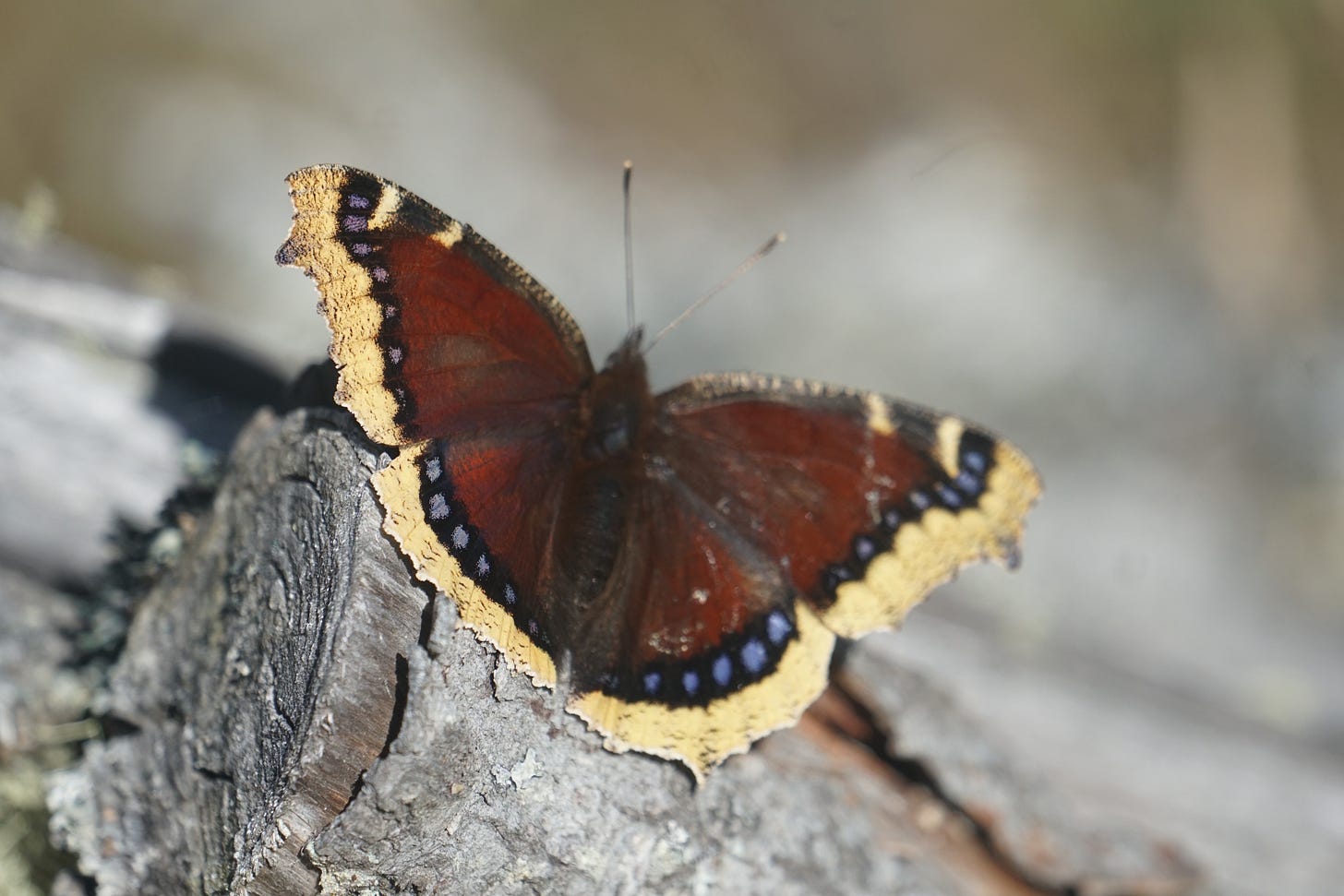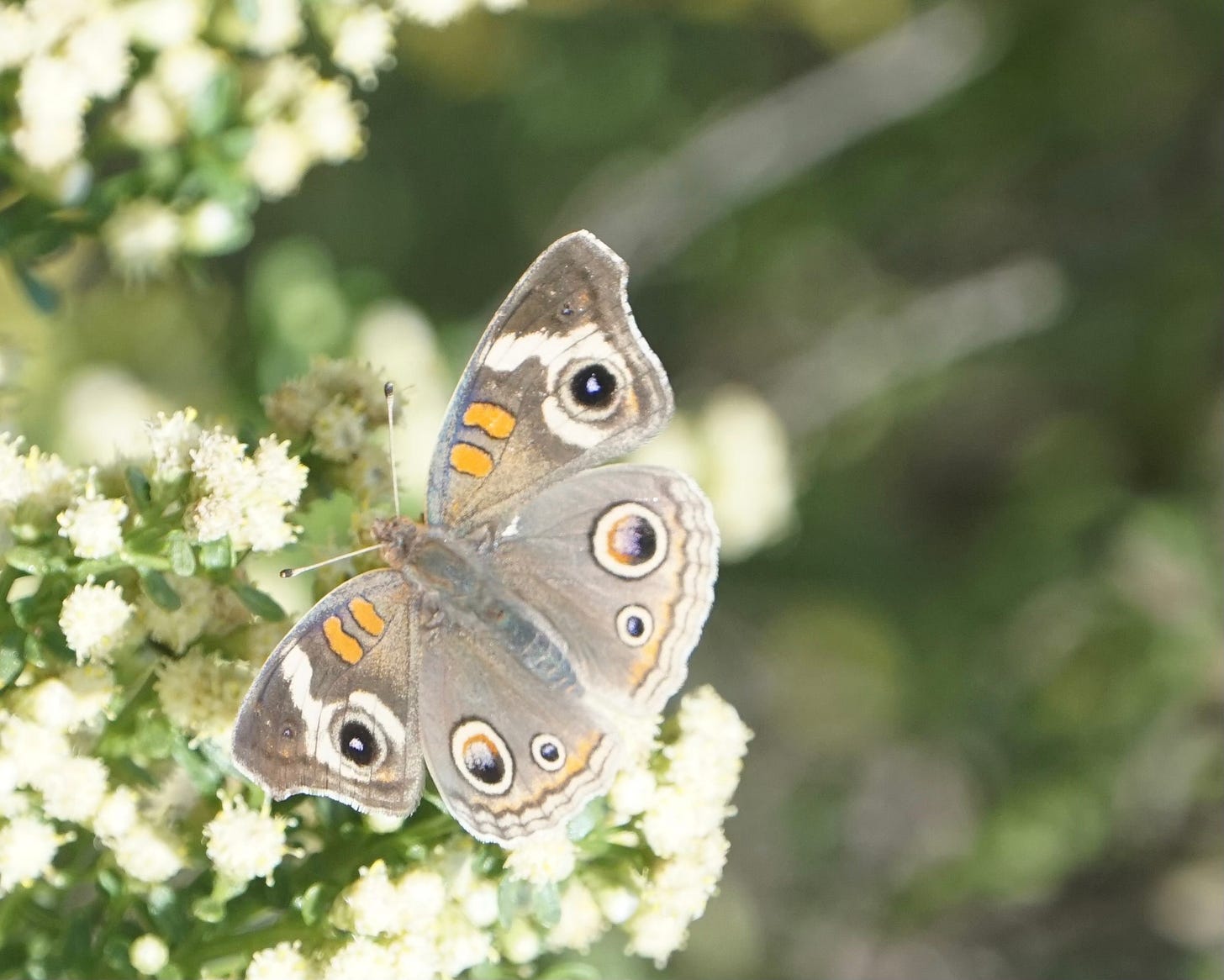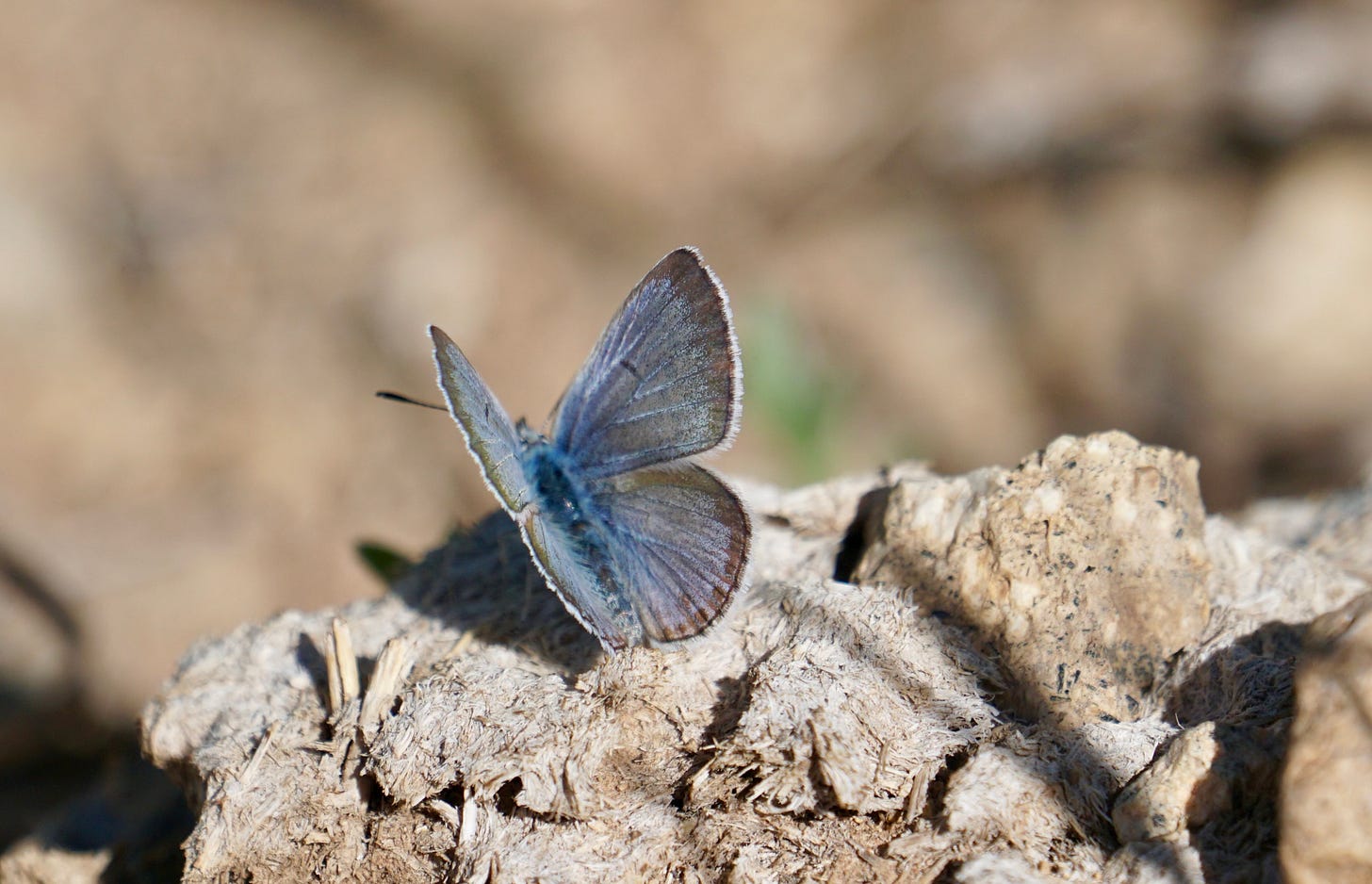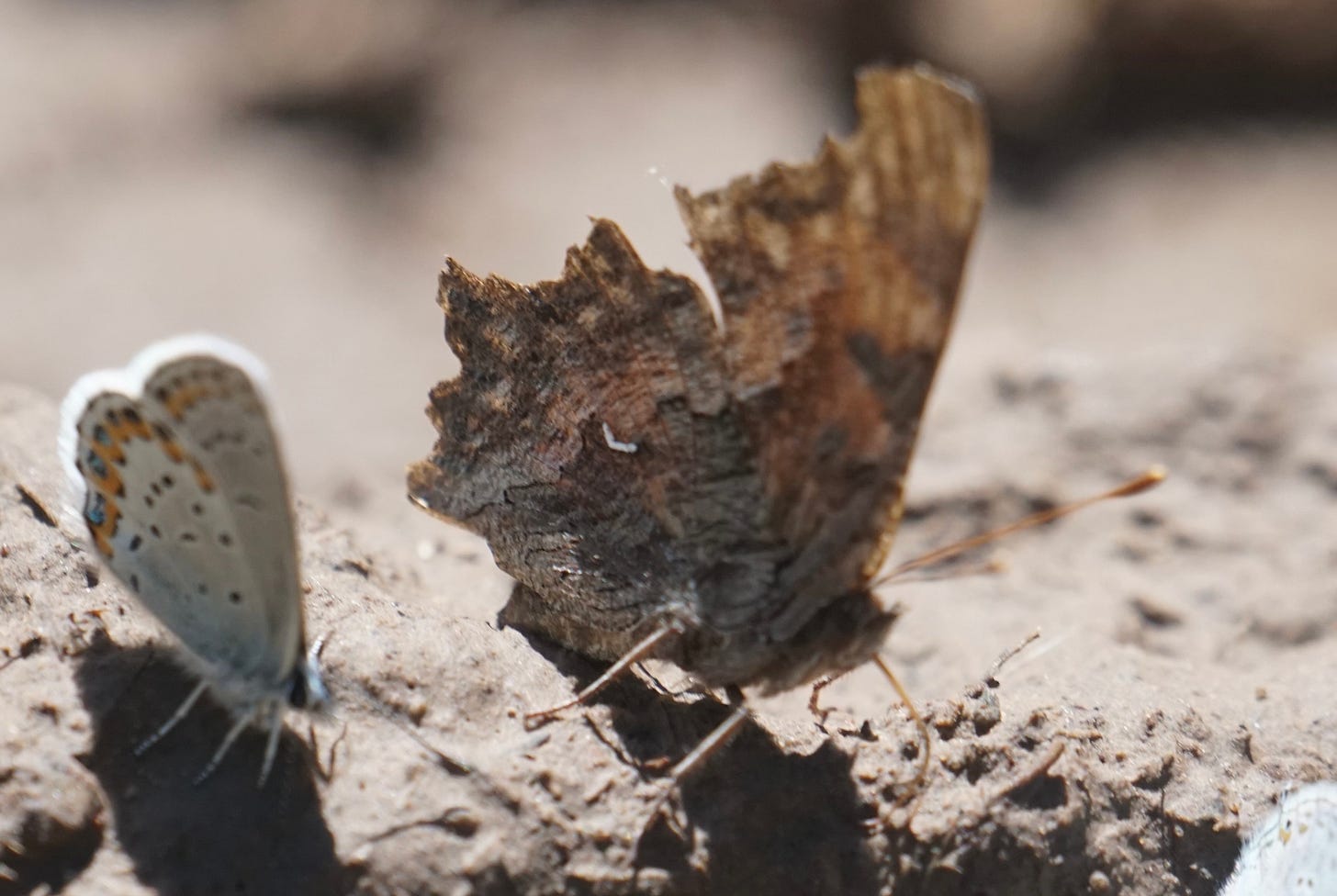The Ferry and I spend a lot of time thinking on and writing about birds, and that, of course, is just fine. Among our written observations, however, we do actively include mentions of other-than-avian aspects. To restate what has given this year a moderate size, our goal beyond the concrete aim at seeing 500 species of birds, continues to be one of casting a wide naturalist’s net. After watching a Snowy Owl (Bubo scandiacus) on a cool November beach, coastal Massachusetts, we have far over-shined our initial goal, as we now hover at an amazing 547 species on the year. Amazing, when one considers that birds have not been our only objective. Our slowed pace, and our openness to observe everything, and not only creatures with feathers, has really been the tentpole holding this immaculate year upright.
A vision arrowed towards only one thing, birds, insects, rocks, trees, would offer but a hollow version of the natural world’s complexity, just as focusing solely on the price of gas, or solely on immigration, or solely on any singular piece of human issue will give a voter a flimsy range of view in terms of understanding the correlative quality of life as a whole. Birds are not only fascinating because of color, of plumage, of tail length or bill shape and size; birds fascinate because of what they do, how their survival is informed by the flowers that feed other beings, by the terrain that houses voles, by the changes in weather that bring penury or prosperity up and down the chain. Hand in hand with genetics and intuition and innate impulse, the tone of a bird’s atmosphere helps paint their part in both a micro and a macrocosmic world. Thus have we always aimed to incorporate landscape, geology, mammals, reptiles, trees and flowers into all of our observations.
The Ferry and I have many blind spots in our identification skills, but what we lack in immediate knowledge we make up for with an eternal flame of curiosity. To be fair, observing and identifying birds can be challenging: separating sparrows, eyeing closely the fineness of the striping on flanks, trying to see if the vent on a fall warbler is pale white or dusky. Taking it to the next level, with butterflies sometimes the placement of a small cell spot, or the depth of color on the veins on the underwing can distinguish one species from another. It is surely difficult; it is surely frustrating; but it is surely edifying, when you give yourself over to it.

If we stop to pay even a tiny bit of attention, there are many things in our daily lives that would only enhance our appreciation of the grand scheme. We pass by so much, on the way to our burdensome routines. We sadly rush to get to whatever drudgery we would openly rather avoid. We stare at our phones, and we key-bump opioid screens. And, upon consideration, it makes sense that we do all this: giving more attention to what is happening on Instasham or Facebloop or Thick-Tok makes it so much easier to dodge the oncoming freight train of inward reflection, and inward reflection is a real pain in the ass. We have to claim even a little time to pause and reflect on how consequentially enmeshed everything is with everything else. Without the sun, there is no warmth; without warmth, there is no Earth; without Earth, there are no trees; without trees, there are no bees; without bees, there are no birds; without birds, there are no humans; without humans, there are no books; without books, there is no thinking; without thinking, there is no anything. Should we sit in the garden, just for a moment, and wonder on spring flowers, be enrapt by the colorfully visiting butterflies, we could be a little closer to Earth, that much closer to other creatures, to plants, to literature, to thinking. Imagine how included in the world we will feel.

This year, we have read a lot. And one thing that has struck us, as we intentionally and surreptitiously curated our books, is how across the board, whatever we happened to be be reading, from E.L. Doctorow to Annie Dillard, Blaise Pascal to John Nichols, Nell Zink to Agatha Christie, that all of the authors riding along with us have been in love with nature, as well as with words. Art is nature? Nature is art? I felt like a dummy, having unconsciously assumed popular writers to be mostly concerned with the human heart. But, you can’t be a keen observer of a singular heart without also observing its place amongst the multitude.
One of our poetic greats, and one of our oftentimes divisive literary figures, Vladimir Nabokov, was, beyond the canon of the written word, also an intense lover of butterflies and a well-renowned lepidopterist.
My loathings are simple: stupidity, oppression, crime, cruelty, soft music. My pleasures are the most intense known to man: writing and butterfly hunting.
-Vladimir Nabokov-
He spent many an hour closely separating species under microscope at Harvard’s Museum of Comparative Zoology. Six hours a day, seven days a week, analyzing the differences in the genitalia of physically small blue butterflies. The museum, to this day, still houses Nabokov’s “Genitalia Cabinet” where he kept the collected private bits of male blues.
Nabokov wrote important papers on lepidopteral taxonomy in the 1940’s, but because he had no degree in the sciences, he had been discounted as a serious scientist. In the 90’s, a group of international lepidopterists set out to prove his influence, and eventually clear his status as a mere amateur. An entire genus of blue butterflies, Nabokovia, is now named after him, paying homage to the tireless science he accomplished while being, at the same time, the world famous author of plays, poems, and seventeen novels, including his butterfly-laden masterpiece, Lolita.

Whether one likes Nabokov’s stylistics, his politics, his views on male/female relations, it is pretty hard to deny his ability to tweak the fine filigrees of language, to play with structure and to hone in on the substance of a character, a scene, a simple line. Personally, I find his maneuvering within the play of words to be masterful. And I find it no coincidence that a someone so ardently appreciative of a capacity to analyze insect genitalia for hours upon end until it actually affected his eyesight, might also appreciate the fineness to be sought within the social assonance, consonance and dissonance of language. For me, there is zero stretch needed to connect a penetrating scientific capacity and a facility to profoundly create a delicateness of character.
Clearly I would never put my writing in even the remote vicinity of the greats, but when it comes to appreciating the intricacies and finite details it takes to create a world, my love for both language and nature harmonizes in utopian seamlessness. And now, for your enjoyment:

















Okay. I am awaiting a report of the wonders of the Maine coast. Puffins anyone?
I love this, Tyler! Thank you for reminding me, once again, to look up and outward beyond the narrow scope of what I find immediately interesting. ✨️🙏